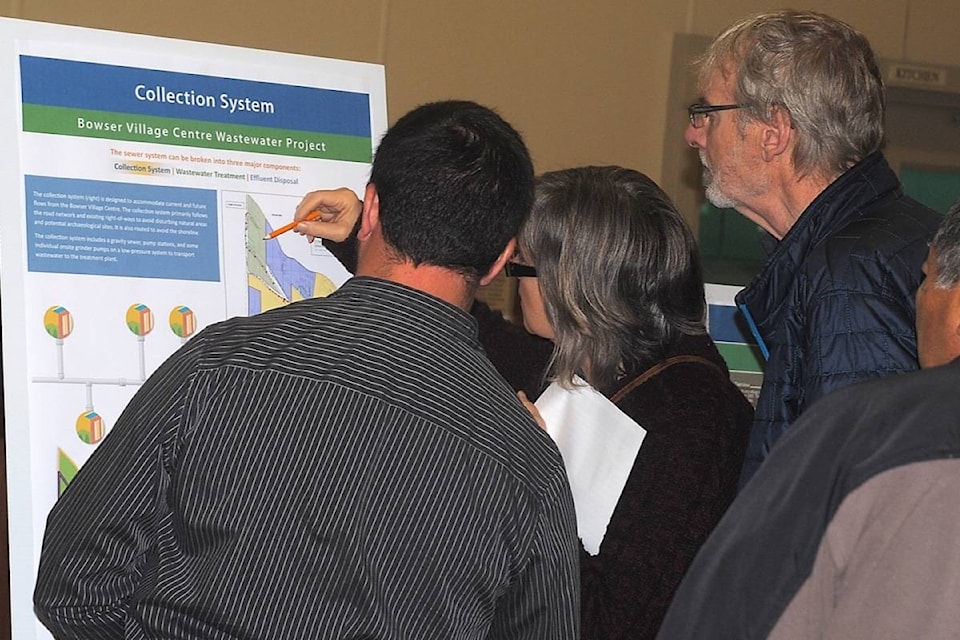Bowser residents got to hear both sides of the issue of the regional district’s Bowser Village Centre Wastewater Project during an open house held at Lighthouse Community Centre last week.
The Regional District of Nanaimo held a two-day open house, Oct. 18-19, to give all residents of Electoral Area H and beyond an opportunity to learn about the $10.7-million project.
At the same time, the Area H Ratepayers and Residents Association, a newly formed group opposing the project’s marine outfall through the Stop the Bowser Sewage Outfall campaign, held its own information session and membership drive, also inside the Lighthouse Community Centre.
People that dropped in were intially drawn to the different informational placards lined up by the RDN for perusal. Project team members were on hand to answer any queries. The public was given the chance to submit questionnaires and to share its comments and views on the project.
Electoral Area H Director and RDN chair Bill Veenhof said the open house was an important process for the project.
“It’s always important to the region and to the community to get the public’s perspectives of what the regional government is doing,” said Veenhof
Veenhof said he couldn’t gauge the true sentiments of the many residents who dropped in throughout the two days, but he hopes once all the questionnaires and feeback has been transcribed and compiled, he would have a better feel of where the public is at. All the public comments and input will be taken into consideration, said Veenhof.
The Area H Ratepayers and Residents Association’s campaign was hard to miss, as it also had visible posters taped outside the room. Members and officers talked to residents about their issues and concerns.
The association’s director, Thomas Gates, said members are trying to get their message out through various social media platforms to provide information and to answer frequently asked questions as to why they are opposing the plan to discharge treated wastewater into the Salish sea. They want the RDN to explore a land disposal option.
“We’re bringing up conflicting information that really says don’t go and dispose of this in the ocean,” said Gates. “It is still full of chemicals, pharmaceuticals, pathogenic organisms and other toxins. There’s a long list. You can go to the Environment Canada site and just look at what’s in sewage effluent.”
Veenhof had indicated the RDN is listening to the community and is still exploring other options to the plan of laying pipelines in the residential Noonday Road beach access, where treated sewage effluent will be disposed into the the sea.
“It’s important to underscore that we are looking at other options for the outfall,” said Veenhof. “It’s also important to underscore that we’ve looked really hard at land-based disposal. There are people that want land-based disposal. In a perfect world, I want a land-based disposal. But we can’t get it from here.”
Veenhof explained that the RDN reviewed the last study, and the answer was “no” from the engineers.
“We went back recently with different engineers, different look and the answer is still no,” said Veenhof. “A contractor who is well-versed in sewage thought we could go to a land-based disposal. He did further research and we can’t get there from here. We had three looks at it.”
Gates disagreed with the RDN’s findings.
“There’s two engineering feasibility reports out there that say there is land available that has good percolation for using an infiltration system, or there’s newer systems that slow down the infiltration and you get a much clearer product so that you’re not going to get groundwater contamination,” said Gates. “There’s also green technology where you take that water that’s treated to a higher level and use it to irrigate forests. You can also take the bio-solids and distribute them in the forests so the trees grow at an amazing rate, particularly during the dry summer period. Maybe we can get a forest company involved in that.”
